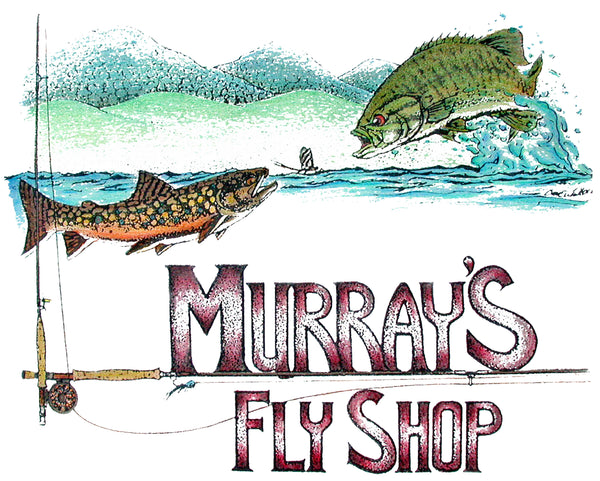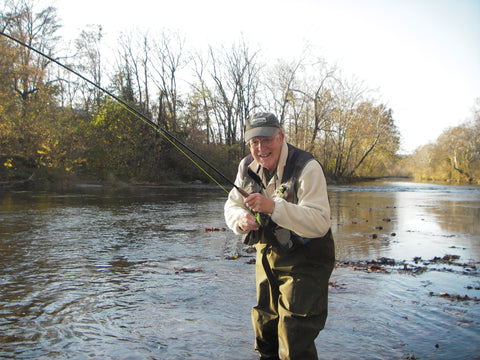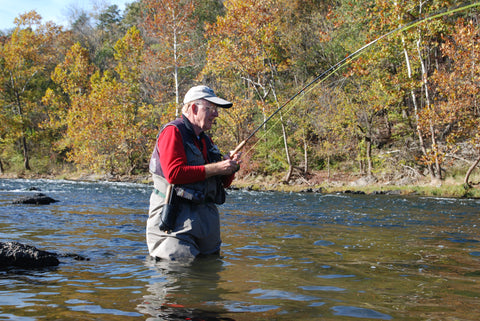Reading a Smallmouth River like the Shenandoah River
Reading a Smallmouth River like the Shenandoah River
Fly Fishing for smallmouth bass in rivers is one of the most exciting forms of angling one can find. That large fish you’ve just hooked leaping high in the air right in front of you presents a portrait you’ll never forget.
In order to be consistently successful in catching large bass one needs to adapt his tactics and fly patterns to the different parts of the river. For example, a bass feeding along an aquatic grassbed in the shallow part of the river will feed differently than one holding in a deep pool in the middle of the river.
Let’s set up an imaginary river pool containing many different types of cover and use the tactics and flies which work in each area. We’ll start at the upper end of the pool and fish our way downstream to where it ends at the next riffle two hundred yards downstream.

The shallow riffle (A) at the beginning of the pool is two to three feet deep flowing over a cobblestone stream bottom. This is a perfect habitat for natural sculpin minnows and the smallmouths feed heavily upon them. A productive way to fish this area is to wade into the side of the upstream part of the riffle and cast a streamer such as Shenk’s Sculpin size 6 forty feet across stream. Swim this slowly back across stream by stripping it six inches every five seconds. Successive casts are made slightly longer until you are casting as far as you are comfortable and use the same streamer action. Wade downstream, stopping every ten feet to fish your Shenk’s Sculpin as above until you have covered all of the shallow riffle.
The deep riffle (B) is located downstream of the shallow riffle. The water here is three to four feet deep with some pockets reaching five feet deep. The stream bottom is composed of stones from basketball sizes to wheelbarrow size. Great populations of natural hellgrammites (the larva of the dobsonfly) live in these riffles. Reaching up to four inches long and having a three year life cycle the bass know them well. I like to match these with a Murray’s Heavy Black Hellgrammite sizes 4.
It is imperative that you fish your Hellgrammites deeply here. A great way to achieve this is to fish upstream dead drift on a 9 foot 2X leader. By casting straight upstream or up and across stream at only a twenty degree angle you can drift your fly right to the bass. To detect these strikes I place one Scientific Anglers Indicator in the butt of a knotted leader and a second one in the next leader strand down. Wade and fish your way up through this whole area and as far across the stream as the depth of the water permits. This is very productive for large bass so take your time and cover the water thoroughly.
A back eddy (C) twenty feet in diameter lies against the far bank just downstream of the heavy riffle. This giant Lazy Susan has a slow current that collects a variety of food which washes in from the heavy riffle. Many wounded or dying minnows struggle just below the surface here providing an easy meal for cruising bass.
Prospecting the back eddy thoroughly with Shenandoah Chartreuse Chugger size 4 with a slow chug-pause-chug action will take many of these bass and it is very exciting fishing.
A beautiful aquatic grassbed (D) lies downstream of the back eddy reaching over a hundred feet along the bank and extending thirty feet out into the river. Great populations of damselfly nymphs and shiner minnows live here and the bass regularly cruise the edges of the grass and grab any available food.
A great way to fish this area is to start at the upstream end and wade downstream parallel to the grass forty feet out in the river. If the water along the edge of the grass is three feet deep or less cast a Shenandoah Popper size 4 right against the grass every five feet and fish it out ten feet with a slow strip-pause-strip action. If the water along the grass is over three feet deep mimic the shiner minnows with a Silver Outcast size 6 or a Murray’s Shiner size 6. Cast this tight against the grass every five feet and swim it out ten feet by stripping it six inches every five seconds. Continue these tactics as you wade slowly downstream,
A gravel bar (E) is found downstream of the grassbed that extends almost a hundred feet downstream and reaching fifty feet out into the river. The water is a foot deep along the bank and becomes three feet deep at the outer edge in the river. This is the primary habitat for shiner minnows which are found here in large schools.
There are two very productive tactics for fishing the gravel bars.
At dawn and dusk the bass cruise the shallow parts of the gravel bars to feed on the shiners. Cover the whole area with a Silver Outcast Streamer size 6 as you wade downstream, being especially alert for bass chasing shiner minnows.
If you are floating the river pull out into the river about fifty feet from where the gravel bar tapers off to water four to five feet deep….This is big fish country. They cruise these edges feeding on shiners that stray off the gravel bars. I’ve caught many memorable smallmouths in these areas by drifting and casting a Shenandoah Chuggar size 4 to these drop offs and fishing it back toward the boat with a loud six inch chug-pause-chug action every ten seconds.
The mid pool (F) section of the pool is downstream of the gravel bar. It is two hundred feet long with water reaching five to six feet deep. The stream bottom is cobblestone and the current is only moderate, making it an ideal habitat for madtoms. This minnow which looks like a small catfish is the primary food for large smallmouths in many rivers. The Murray’s Madtom size 4 is very effective here. Wade or float down the side of the river and cast across stream using a ten inch stripping action every ten seconds to swim your Madtom along the stream bottom. Experiment between a floating line and a sinking tip line which sinks from 2 to 4 inches per second to assume you are keeping your fly deep where the large bass feed.
In the tail of the pool a large oak tree toppled from the far bank into the river many years ago. Flood waters have chewed off the small limbs and gouged out the stream bottom where it lies in the water. This creates an ideal feeding station as well as a home for the large bass. With these great qualities it is wise to fish this downfall (G) thoroughly. If the water beneath it is three feet deep or less the great fish-appeal of the Shenandoah Blue Popper size 6 fished along the upstream face of the downfall will produce many bass. If the water beneath it is greater than three feet deep Shenk’s White Streamer size 6 is very productive. Cast across stream dropping it close to the bank and swim it back under the downfall with a slow stripping action. Don’t stop when you catch one bass here, but continue to fish it carefully. You will often catch several nice bass from beneath each downfall.
By analyzing a river in this manner and choosing the appropriate flies and tactics for each type of cover you will be able to consistently catch many large smallmouth bass.
Want to Learn More About Reading the Water? Consider taking an "On The Stream" Smallmouth Bass School with us. Each year we offer these schools throughout the summer on either the North Fork or South Fork of the Shenandoah River.
-
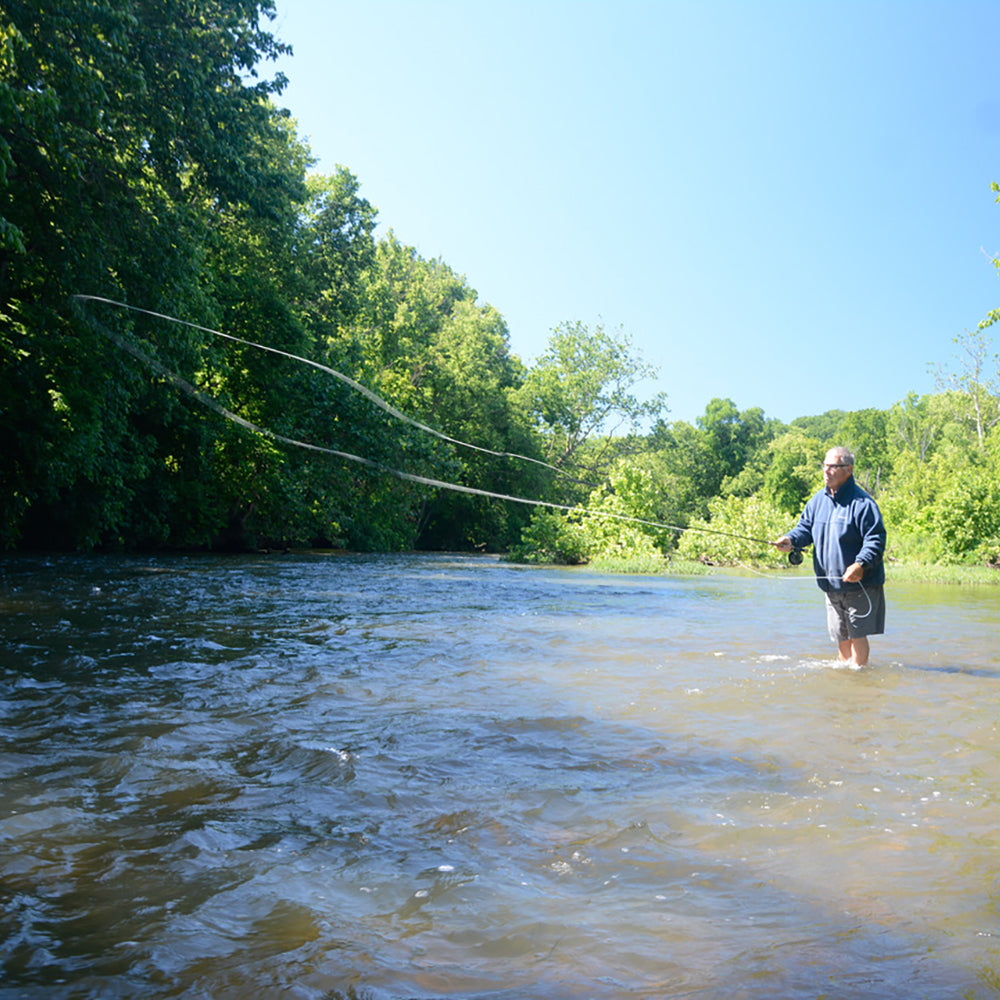
Learn Fly Fishing at Murray’s Fly Shop: Classes, Workshops & Schools
Welcome to Murray’s Fly Shop – Your Fly Fishing Learning Hub At...
-
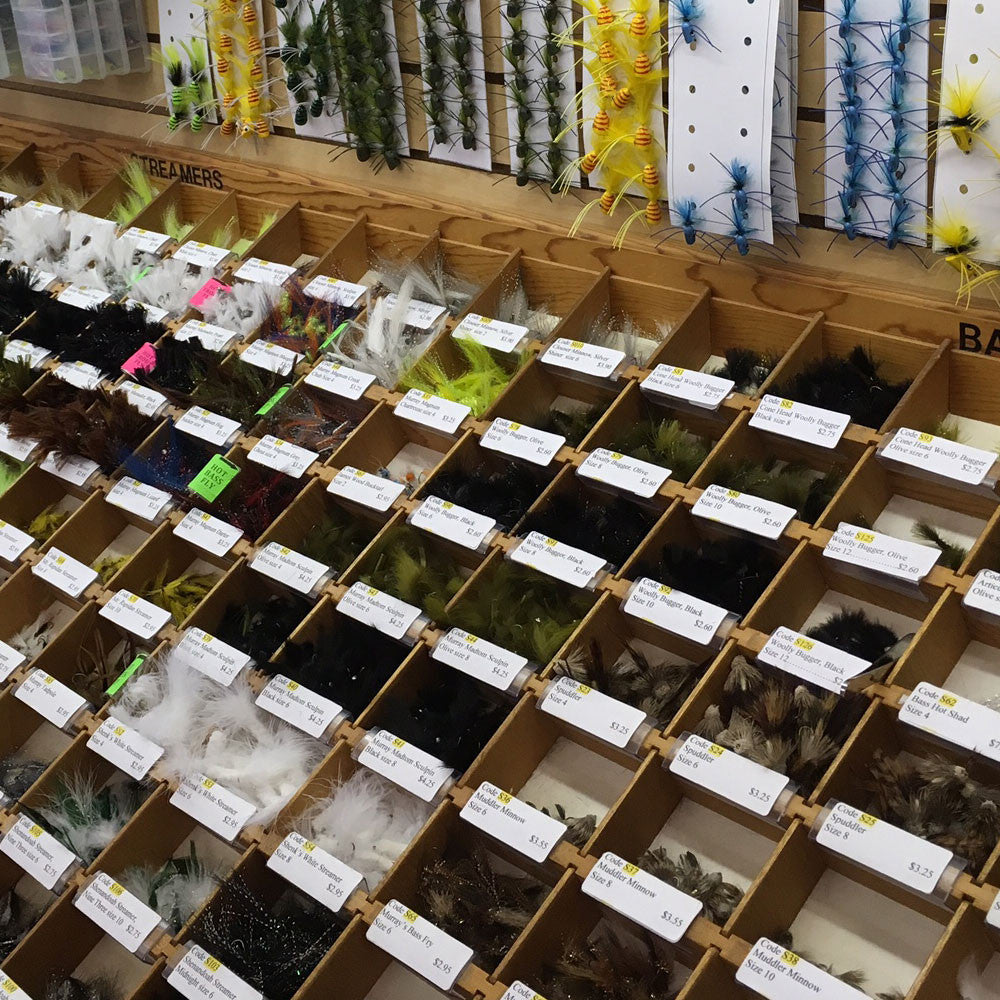
Featured Flies of the Month
Harry Murray's recommended fly list for this time of the year. (October...
-
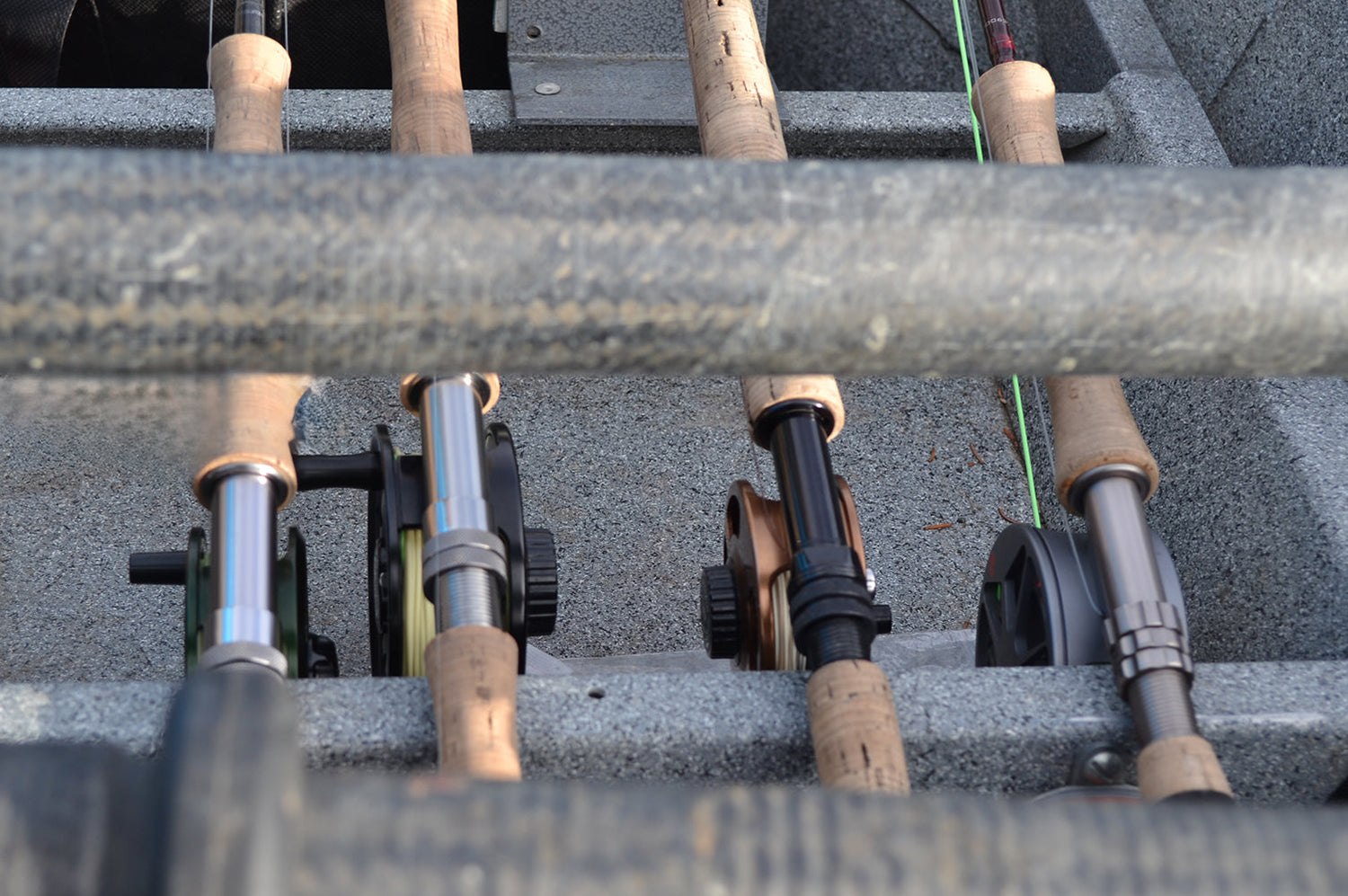
Fly Fishing Rod Outfits
Fly Fishing Rod and Reel Outfits for Smallmouth Bass fly fishing, Trout...
